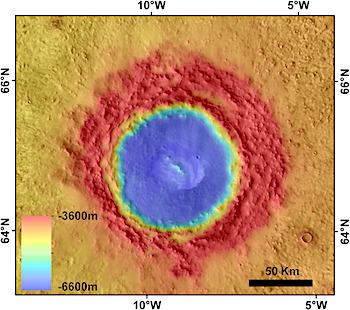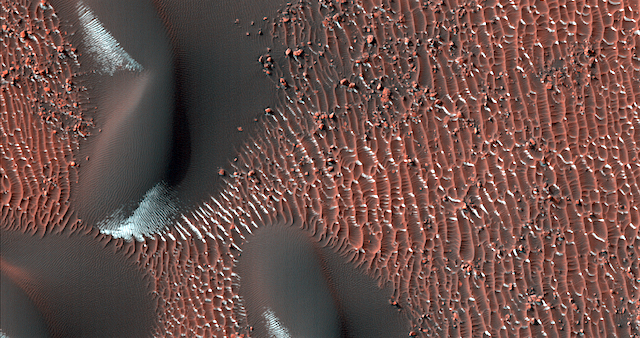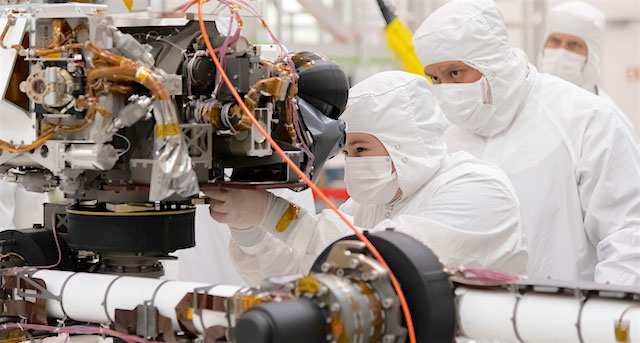 [Editor’s note: From a paper by François Costard and eight co-authors recently published in the Journal of Geophysical Research.]
[Editor’s note: From a paper by François Costard and eight co-authors recently published in the Journal of Geophysical Research.]
The Lomonosov Crater Impact Event: A Possible Mega‐Tsunami Source on Mars
• Unusual morphometric characteristics of Lomonosov crater in comparison to the other northern complex craters
• Lomonosov crater was probably due to the presence of a shallow ocean of liquid water at the time of the impact
• Agreement of the Lomonosov age with that of the Thumbprint Terrain unit (~3 Ga) suggests that it was the source crater of the tsunami
Recent research suggests that major meteorite impact events into a Late Hesperian/Early Amazonian ocean likely produced a mega‐tsunami that would have resurfaced coastal areas in northwestern Arabia Terra.
The orientations of the associated lobate deposits, a conspicuous type of landforms called Thumbprint Terrain, suggests that if an impact event triggered the mega‐tsunami, the most likely location of the source crater is within the northern plains regions situated north of Arabia Terra. This study focuses on the identification of impact craters that impacted into the ocean and are likely to have produced the tsunami.
We selected 10 complex impact craters, based on their diameters, location, and geomorphic characteristics. Of those, the Late Hesperian ~120‐km‐diameter Lomonosov crater exhibits a unique topographic plan view asymmetry (compared to other similar‐sized and similar‐aged craters in the northern plains such as Micoud, Korolev, and Milankovic). We attribute its broad and shallow rim, in part, to an impact into a shallow ocean as well as its subsequent erosion from the collapsing transient water cavity.
The likely marine formation of the Lomonosov crater, and the apparent agreement in its age with that of the Thumbprint Terrain unit (~3 Ga), strongly suggests that it was the source crater of the tsunami. These results have implications for the stability of a late northern ocean on Mars. [More at link]













 THEMIS Image of the Day, July 18, 2019
THEMIS Image of the Day, July 18, 2019


